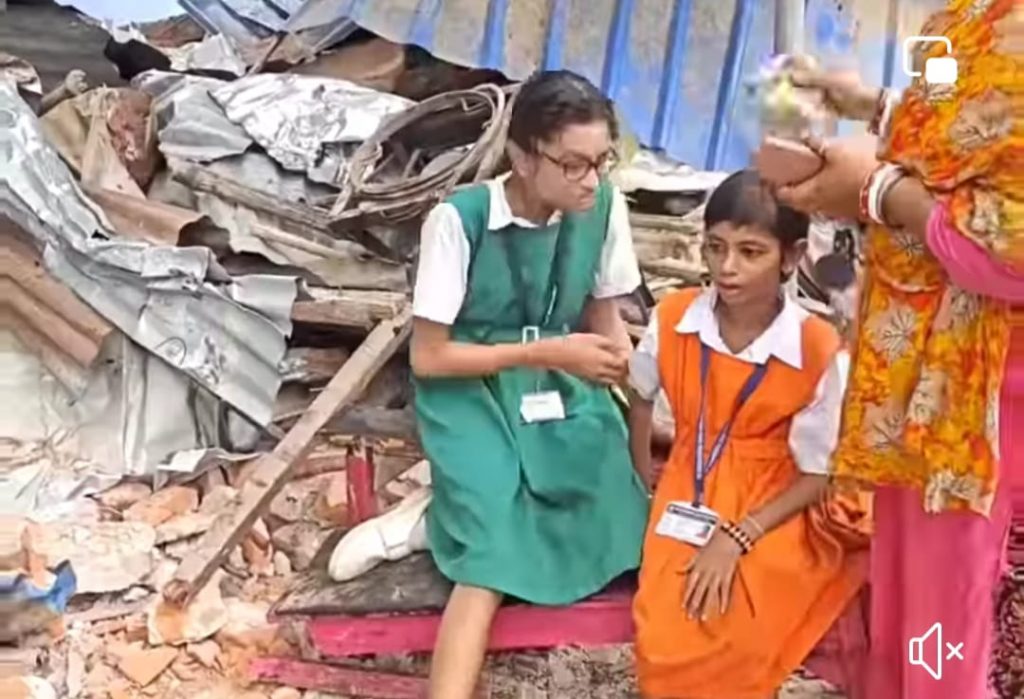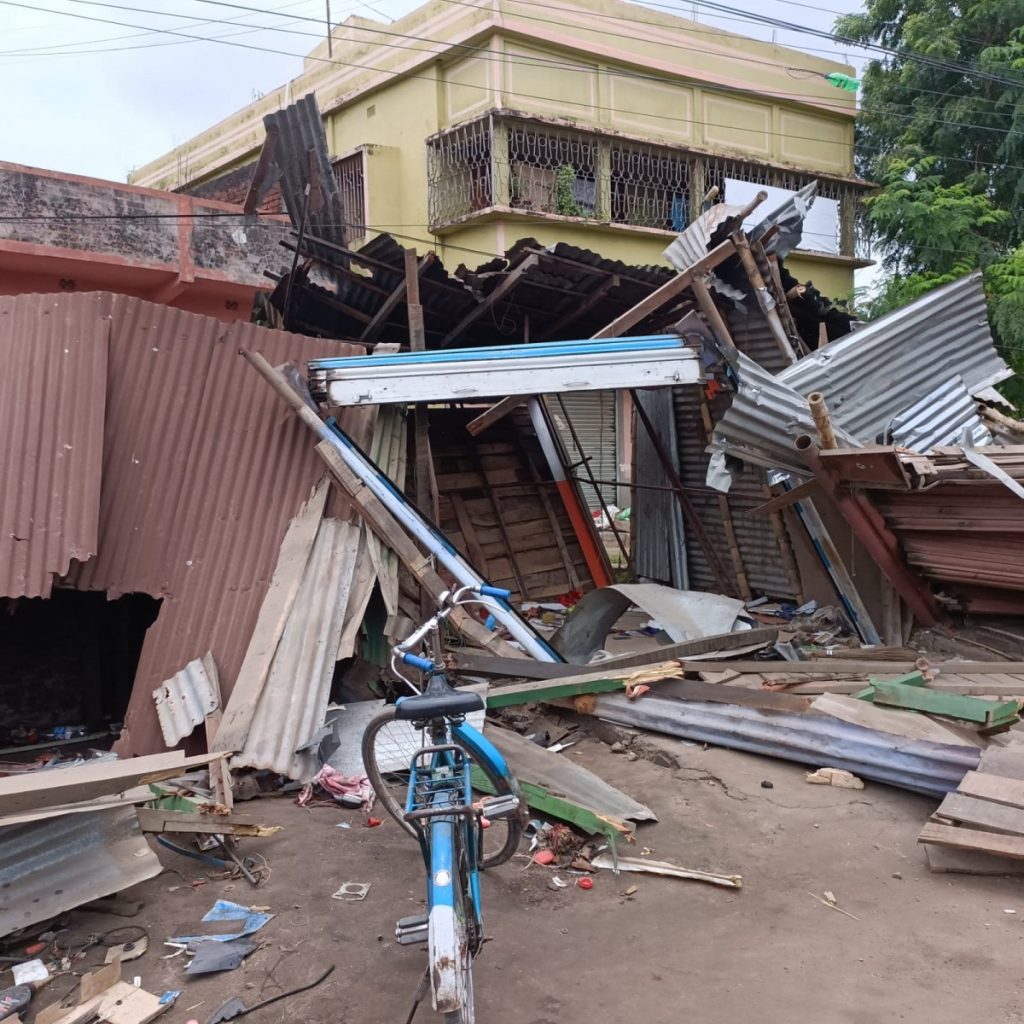Bulldozers Reflect the Clash of Development and Displacement in Bengal
A bulldozer recently tore through 2,500 homes in a colony, casting 16,000 people into the streets within mere hours. The official narrative claimed it was because the administration wanted the expansion of narrow streets.
While this might echo the rhetoric of any city administration in present-day India, this account hails from the Rafah refugee camp in Gaza, chronicled by Leopold Lambert in his poignant work, Bulldozer Politics: The Palestinian Ruin as an Israeli Architectural Project. There, the perpetrators are the Israeli regime but the same colonial brutality and twisted logic of ‘development’ are mirrored in contemporary India. Indian metropolises have followed this grim path since the sweet breeze of neoliberalism began to influence Indian policymakers in the 1980s. An earlier chapter of displacement and demolition was captured by Anand Patwardhan in his 1985 documentary Bombay: Our City.
A relentless tide has swept across India in recent times, submerging cities like Delhi, Bengaluru, Mumbai, and even tier-2 and tier-3 towns such as Mewat and Haldwani. Yet, amidst this storm, Kolkata stood tall as a beacon of inclusivity, defying slum demolitions and hawker evictions. The city opposed the notion of bulldozer justice, allowing slum-dwelling children to play in the shadows of towering gated communities.
Alas, this resistance has faltered. In the last few months, the Kolkata and West Bengal police began evicting thousands of hawkers, following a directive from the very top, chief minister Mamata Banerjee.
The irony is palpable: Banerjee’s rise to prominence was forged in her fervent fight for the urban poor. She stood shoulder-to-shoulder with hawkers. Once she nearly brought Kolkata to a standstill for a month in 1996, protesting against the controversial Operation Sunshine initiated by the Left Front-controlled Kolkata Municipal Corporation (KMC) and the Kolkata Police.
It seems history has repeated. The very leader who once championed the cause of the urban poor is now presiding over their eviction. One can argue that the 1996 eviction drive was gentler than the current action in 2024, as the KMC and the Left Front government took some measures to rehabilitate the displaced hawkers.
“Where will we go if we are not given a place to relocate? The government announced on loudspeakers the night before that it wanted to clear the footpaths, and the next morning, they demolished our shops with bulldozers. This has been our business for a long time, our livelihood. How will we survive if this is taken away from us?” asked a hawker in New Town, the satellite township near Kolkata. All the temporary shops in the vicinity were cleared the very next day.

A video screengrab shows two schoolgirls after their house was razed.
While the government has paused the demolition drive, apprehension and fear have gripped the small business owners operating shops on the pavements. An image of two children in school uniforms crying over their father’s demolished shop in Birbhum recently went viral. Debjani Das, the mother of those two children, is still struggling to make ends meet. She asked, “That shop was our only source of income for my children's education and household expenses. What will happen to us now?”
No surveys or reports have been conducted to identify the undocumented hawkers and slum dwellers or to assess their impact on the local economy. The Street Vendors Act of 2014 stipulates that no one has the right to place or evict hawkers except the Town Vending Committee, which is comprised of elected representatives, bureaucrats, and representatives of the hawkers. Yet, these guidelines have been disregarded.
State finance minister Chandrima Bhattacharya defended the government action by citing the same illegal encroachment excuse often heard in BJP-ruled states. She said, “We are not evicting hawkers, but we are breaking down the illegal structures blocking pedestrian pathways. The government is sympathetic towards hawkers, and a survey is being conducted to identify genuine hawkers. A solution will be found.”
However, contrary to these claims, the police action was carried out without any standard operating procedures, clear plans of action, or rehabilitation plans. Those who dared to protest, such as Bhabatosh Sarkar, the leader of the Hawker Sangram Committee, and Sanjib Mallik, the CPI(M) councilor from Rampurhat, were detained by the police. Most of the hawkers whose establishments were demolished are yet to get a compensation or rehabilitation package.
“According to a central government survey, 2.5% of the population is engaged in hawking. Based on the state average, more than 1 million people in West Bengal are engaged in hawking. This large group of people has suddenly been put in a difficult situation,” claimed Asitanga Ganguli, the state secretary of the Kolkata Street Hawkers' Union.
However, the opposition parties in the state, still recovering from the recent electoral debacle, have shown near-total absence of political resistance against this bulldozer politics. BJP MLA and Leader of the Opposition Suvendu Adhikari and the CPI(M)-affiliated trade union, the Center of Indian Trade Unions (CITU), have done little more than issuing statements. No prominent leader has taken to the streets in support of the hawkers.
Opposition leader Suvendu Adhikari of the BJP compared the action to BJP government's, saying that in Uttar Pradesh, Adityanath's government "gives adequate notice and time to find alternative places" before removing encroachments. This is not always true, as reports have shown.
The CITU urged the government to immediately implement the Central Hawker Law. "The administration needs to discuss rehabilitation arrangements with all hawker organisations before evicting poor people. Will the government demolish all the illegal constructions built by filling ponds and cutting trees across the state?” the trade union said.

A shack is destroyed at Bolpur in Bengal. Photo: Joydeep Sarkar
Data from the National Statistical Office reveals Bengal is the worst-hit state in job losses within the unorganised sector, with a decline of 30 lakh jobs between 2015-16 and 2022-23. According to the Periodic Labour Force Survey (PLFS) 2022-23, 57.3% of Indian workers are self-employed, a substantial number of whom are hawkers and street vendors. These hawkers are the lifeblood of India's urban poor, providing affordable goods to consumers due to the competitive nature of their trade.
The question arises as to why Banerjee, who counts the urban poor among her most loyal supporters, turned against them with such ferocity. In the latest Lok Sabha election, despite winning 29 seats in the state, the TMC trailed in 69 of the 121 municipalities. Political analysts speculate that the educated Hindu white-collar class voted for the BJP in this election. This eviction drive might be the TMC supremo’s desperate attempt to win them back. However, this strategy could backfire.
The desertion of the urban white-collar class does not appear to be due to a lack of civic amenities, as this group voted for the BJP even in areas like the Muslim- dominated Murshidabad, Baharampur, and Jangipur, where the Hindutva party had no chance of winning. In Kolkata, the TMC trailed in the bhadralok-dominated KMC wards like Ward No. 93 and 104 but led in slum-dominated wards like Ward No. 109 and 134. It seems that voters in slums stuck with the TMC even when the white-collar class deserted them.
Banerjee's sudden eviction drive appears to be a calculated move to woo the white-collar class that voted en masse for the BJP. Yet, targeting her loyal voter base among the urban poor may alienate them and weaken her political standing, potentially causing more harm than good to her electoral prospects.
From an ideological perspective, this seems to be a ‘cleanliness’ drive. The CM’s statements like “Do I have to sweep roads?” imply that hawkers make the city dirty. This threatens to turn a diverse and vibrant city like Kolkata into a lifeless space exclusively for the rich. The move is economically unviable, morally bankrupt, and politically suicidal.
Joydeep Sarkar is a journalist. Ashin Chakraborty is an economics student.
This article went live on August sixteenth, two thousand twenty four, at zero minutes past four in the afternoon.The Wire is now on WhatsApp. Follow our channel for sharp analysis and opinions on the latest developments.




